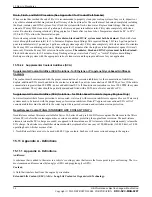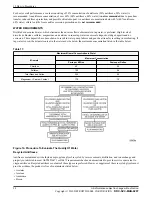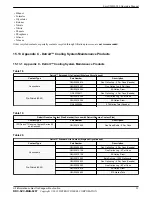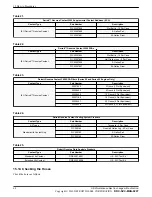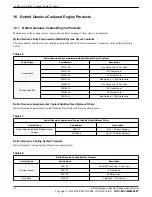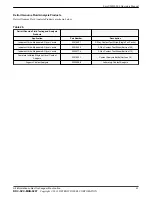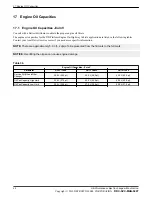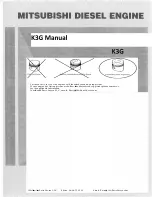
For best overall performance, a coolant consisting of 50% concentration of antifreeze (50% antifreeze, 50% water) is
recommended. An antifreeze concentration of over 60% (60% antifreeze, 40% water) is
not recommended
due to poor heat
transfer, reduced freeze protection, and possible silicate dropout. An antifreeze concentration below 40% (40% antifreeze,
60% water) offers too little freeze and/or corrosion protection and is
not recommended
.
WATER REQUIREMENTS
Distilled or de-ionized water, which eliminates the adverse effects of minerals in tap water, is preferred. High levels of
dissolved chlorides, sulfates, magnesium, and calcium in some tap water causes scale deposits, sludge deposits and/or
corrosion. These deposits have been shown to result in water pump failures and poor heat transfer, resulting in overheating. If
tap water is used, the mineral content in the water must be below the maximum concentration listed in the table below.
Table 17.
Maximum Mineral Concentration in Water
Minerals
Maximum Concentration
Parts per Million
Grains per Gallon
Chlorides
40
2.5
Sulfates
100
5.8
Total Dissolved Solids
340
20
Mag Calcium Content
170
10
Figure 16. Procedure To Evaluate The Quality Of Water
Recycled Antifreeze
Antifreeze coolant made with ethylene or propylene glycol recycled by reverse osmosis, distillation, and ion exchange and
properly re-inhibited to meet ASTM D6471 or D6472 requirements has been demonstrated to provide service equivalent to
virgin antifreeze. Recycled antifreeze coolants of these types are preferred. However, suppliers of these recycled glycols must
provide evidence the product is free of contaminates listed below:
• Acetates
• Acetone
• Ammonia
• Boron
15 How to Procedures
58
All information subject to change without notice.
Copyright © 2019 DETROIT DIESEL CORPORATION
DDC-SVC-MAN-0207













